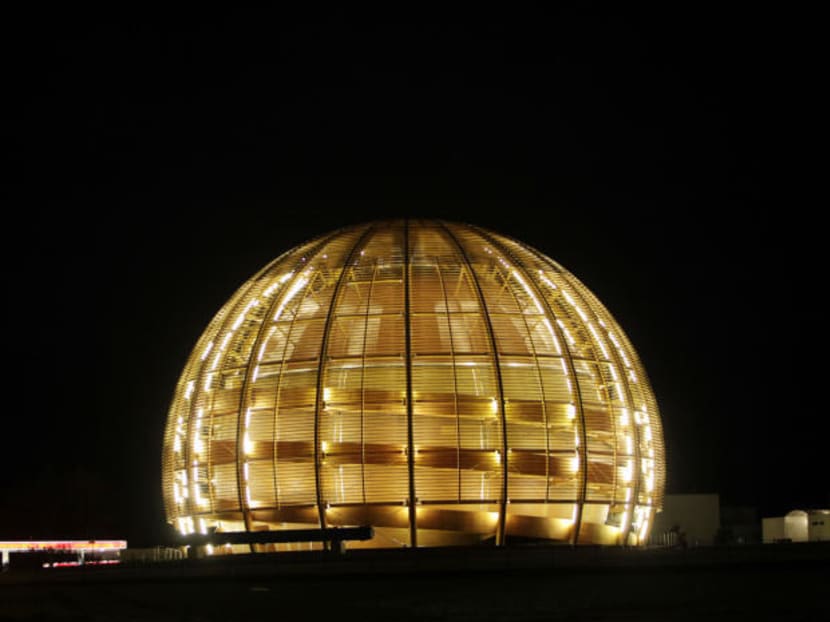European physicist discusses Higgs boson at Brown University
PROVIDENCE (RHODE ISLAND) — The historic 2012 discovery of the Higgs boson particle and the particle accelerator that detected it are getting scientists closer to understanding the creation of the universe, the head of the European Organization for Nuclear Research said yesterday (April 20).

In this 2010 file picture the globe of the European Organization for Nuclear Research, CERN, is illuminated outside Geneva, Switzerland. Photo: AP
PROVIDENCE (RHODE ISLAND) — The historic 2012 discovery of the Higgs boson particle and the particle accelerator that detected it are getting scientists closer to understanding the creation of the universe, the head of the European Organization for Nuclear Research said yesterday (April 20).
Director general Rolf-Dieter Heuer was at Brown University to discuss the Large Hadron Collider, the particle accelerator in Geneva that detected a Higgs boson particle, an elusive part of a theory that explains how some types of particles have mass.
“The Higgs boson discovery is only the beginning,” Mr Heuer said.
The multibillion-dollar collider is gearing up for its second three-year run after a two-year hiatus for maintenance and upgrades. Mr Heuer said further experiments using the world’s largest atom smasher could lead to a better understanding of the Big Bang, which scientists theorise was the massive explosion that created the universe.
The European Organization for Nuclear Research, known as CERN, spent about US$150 million (S$203 million) on the upgrade, opening the massive machine every 20m, checking magnets and improving connections.
Brown University professor Ulrich Heintz, part of a group of Brown scientists who travel to Geneva regularly to work on experiments using the collider, said the machine will have nearly twice the energy, increasing the chances of producing more Higgs boson particles.
“We hope to see many, many more Higgs we can study in detail,” Mr Heintz said.
Mr Heintz said scientists are hoping to determine whether there might be other Higgs boson particles out there and figure out why the particle has the mass that it does. Scientists from around the world conduct research at CERN, Mr Heintz said, but everyone shares the same goal.
Until 2012, the particle had eluded scientists for nearly 50 years. Several physicists, including the late Brown University professor Gerald Guralnik, originated the theory in 1964 that predicted the existence of the particle. AP





